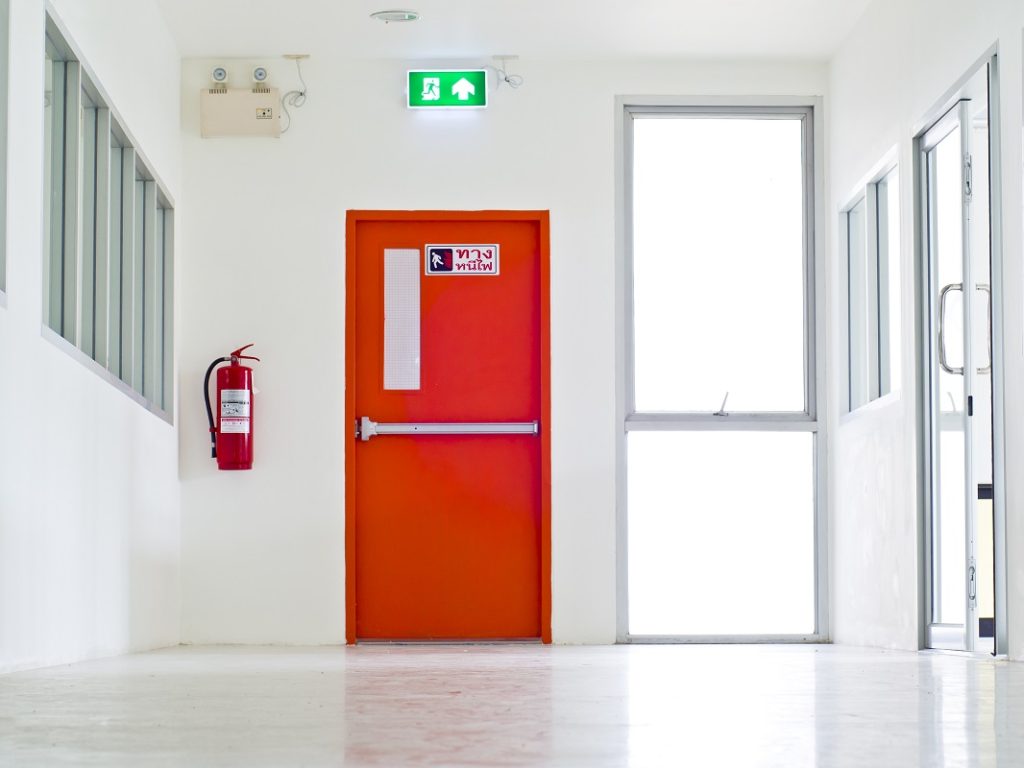- Efficient emergency exit strategies are crucial for business owners to ensure the safety of staff and customers, encompassing reliable exit devices, clear and accessible exit routes, and regular drills.
- Exit routes should be clear and accessible to all, with regular audits and vigilance to maintain their condition.
- Signage, maintenance, and inspections are paramount, with high visibility signs, regular checks on exit devices and safety equipment, and ensuring compliance with safety standards.
- Staff training, including regular refresher courses on evacuation procedures and exit device usage, is essential for effective crisis management and reinforces the safety commitment of the business.
As a business owner, your obligation to ensure the safety of your staff and customers extends beyond providing quality services. One critical aspect of this responsibility is designing and implementing effective emergency exit strategies. This facilitates a safe and orderly evacuation during emergencies and instills confidence among your personnel and clientele. The goal is clear, swift, and secure evacuation, minimizing risks and ensuring everyone’s safety.
Install reliable exit devices
A crucial component of an effective emergency exit strategy is the installation of trustworthy exit devices. One such reliable exit device is the Von Duprin RX Switch Kit. This robust, easy-to-use device ensures a clear, swift, and secure evacuation during emergencies.
The Von Duprin RX Switch Kit’s durability and reliability make it a great choice for business owners prioritizing safety. Investing in such high-quality exit devices reassures staff and customers of your commitment to their safety, thus fostering a secure and confident environment.
Accessibility
Ensuring accessibility in your emergency exit strategy is of paramount importance. All exit routes must be marked and easily accessible for all individuals, including those with disabilities. Accommodations such as ramps, handrails, and wide doorways should be incorporated to facilitate the safe exit of wheelchair users. Here are some tips to ensure this:
Clear exit routes
Exit routes should be free of obstructions at all times. This includes equipment, boxes, or any other materials that could impede movement in an emergency. Regular audits should be conducted to ensure pathways remain clear and unobstructed. Additionally, exit doors should never be locked or blocked from the inside.
This ensures an unhindered pathway during an evacuation, allowing everyone to exit swiftly and safely. Constant vigilance and regular checks are key to maintaining clear and accessible exit routes, reinforcing the effectiveness of your emergency exit strategy.
Adequate signage

Signage plays a critical role in any emergency evacuation plan. Clear, highly visible signs should direct individuals toward the nearest exit, even in low lighting or smoky conditions. These signs should be placed at regular intervals along the exit route and above exit doors, taking into account individuals of different heights and those with visual impairments.
The signage must comply with local and international safety standards, including being reflective or glow-in-the-dark for better visibility in various scenarios. Regular inspections should be conducted to ensure all signage is in good condition and visible, enhancing the effectiveness of your emergency exit strategy.
Regular drills
Regular emergency evacuation drills are integral to an effective exit strategy. Drills train employees and customers to respond to crises, enhancing their familiarity with exit routes and procedures. This ensures a coordinated, orderly, and swift evacuation during actual emergencies.
Moreover, drills provide a platform to identify and rectify potential bottlenecks or confusion points in the evacuation plan, thus promoting continuous improvement in safety measures. Therefore, routine drills should be mandated and carried out meticulously, focusing on various scenarios for comprehensive preparedness.
Maintenance and inspections

Regular maintenance and inspection of exit routes and associated devices are imperative to ensure optimal functionality. Exit devices and other safety equipment should be routinely checked for wear and tear or malfunctioning components, and necessary repairs or replacements should be done promptly.
Fire safety equipment, emergency lighting, and signage should also be part of these inspections to guarantee their effectiveness in emergencies. This includes checking the operation of fire extinguishers, smoke detectors, and emergency lights, along with the visibility and condition of exit signage. This rigorous approach ensures that your emergency exit strategy remains robust and effective, providing a safe environment for all.
Staff training
Staff training is fundamental to the success of your emergency exit strategy. Continual training sessions ensure that all employees are fully aware of the evacuation procedures, know how to use exit devices, and understand the importance of keeping exit routes clear. They should also be trained to assist customers and visitors during an emergency.
Regular refresher courses are important to keep this information fresh and top of mind. A well-trained staff is a critical asset during an emergency, able to guide others to safety effectively and efficiently. This commitment to training demonstrates your dedication to safety and reassures everyone within the building.
In conclusion, the safety of your business premises is a responsibility that you cannot afford to overlook. Review your current emergency exit strategy, identify areas of improvement, and implement measures to enhance safety. Remember, a well-planned and effectively executed emergency exit strategy can save lives.



